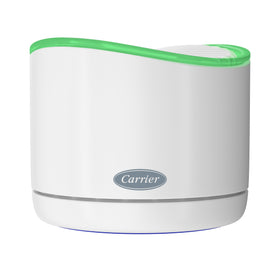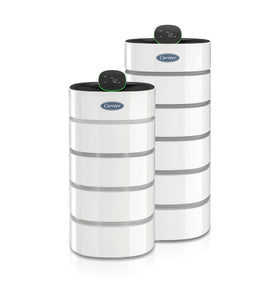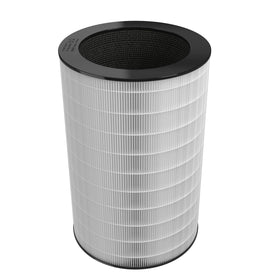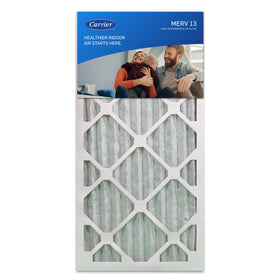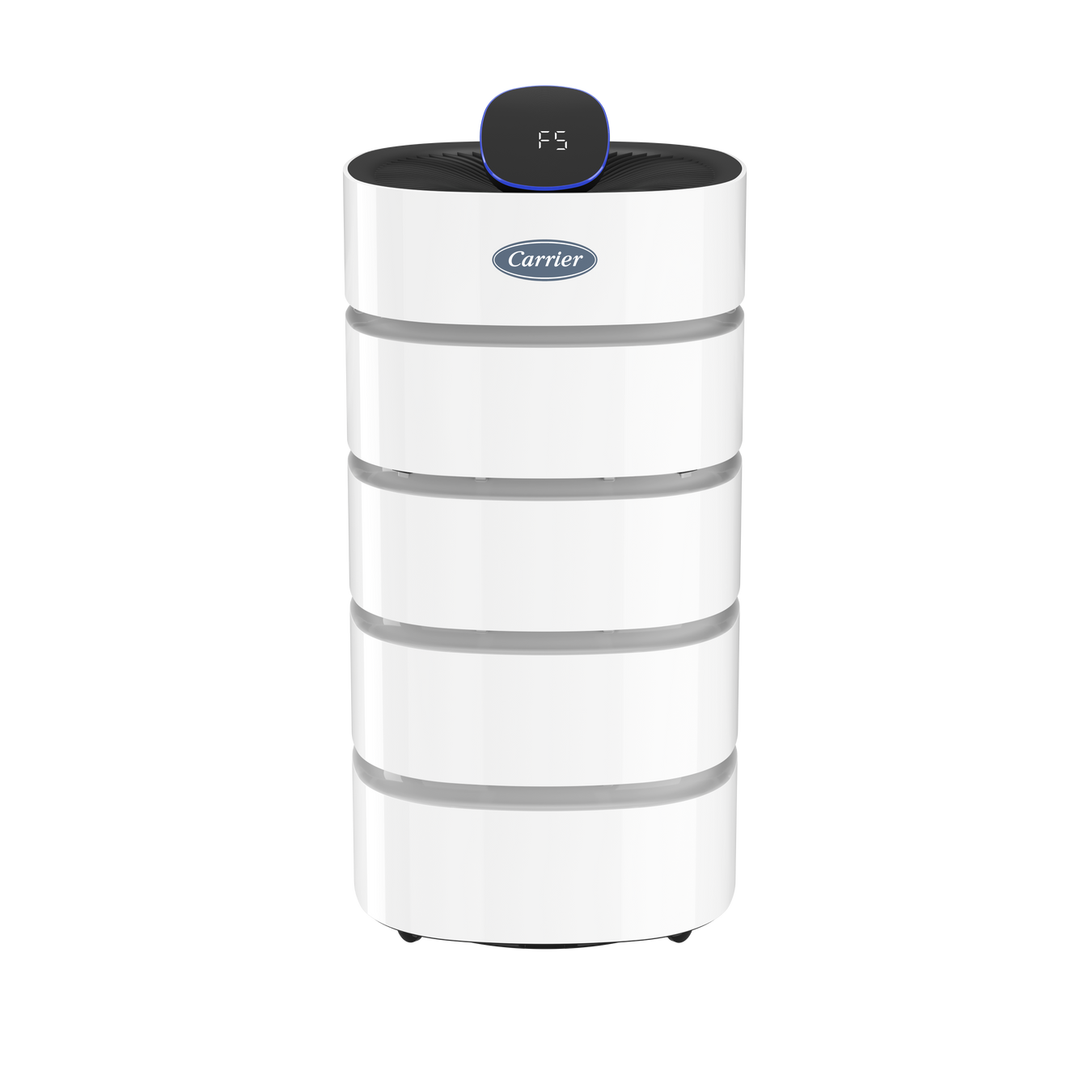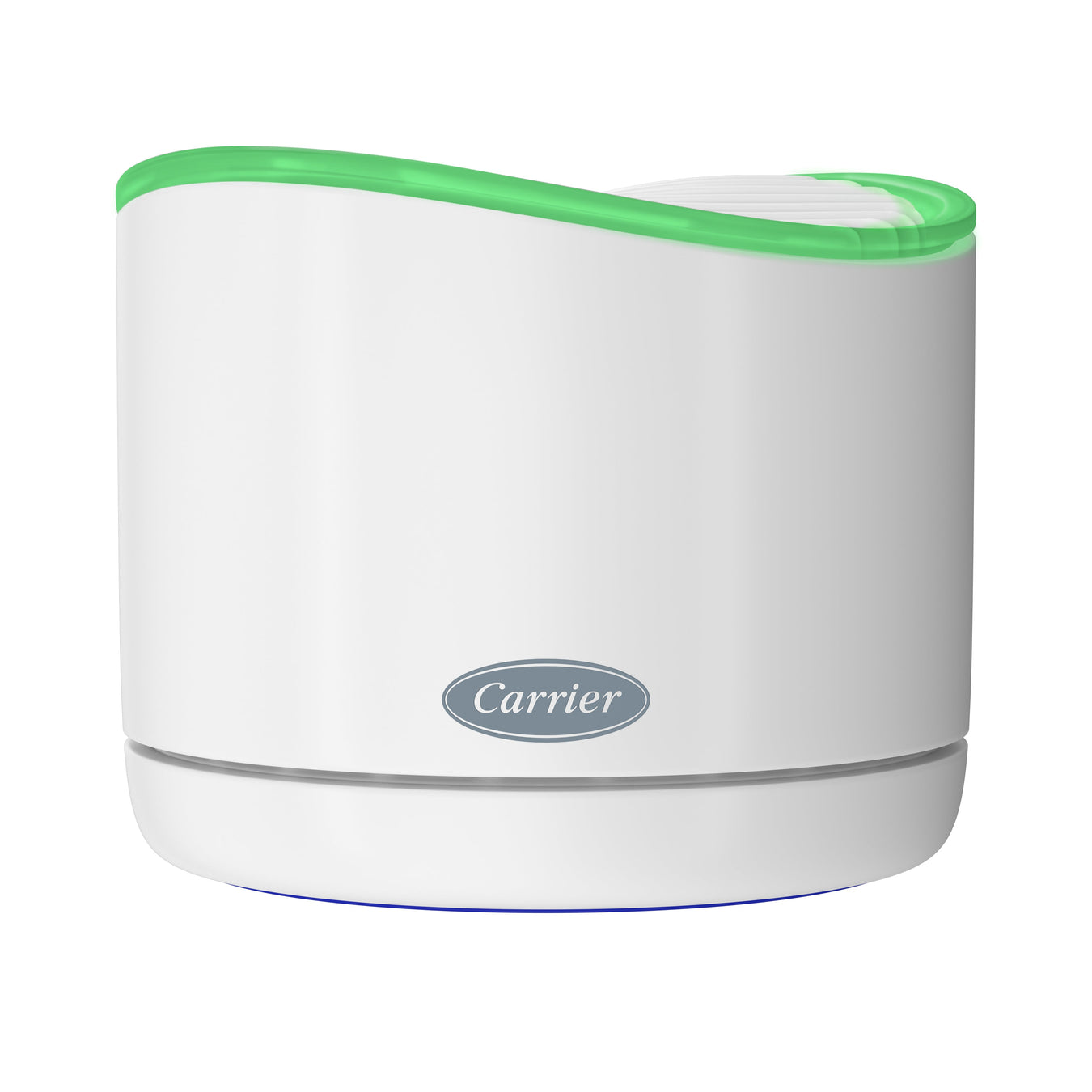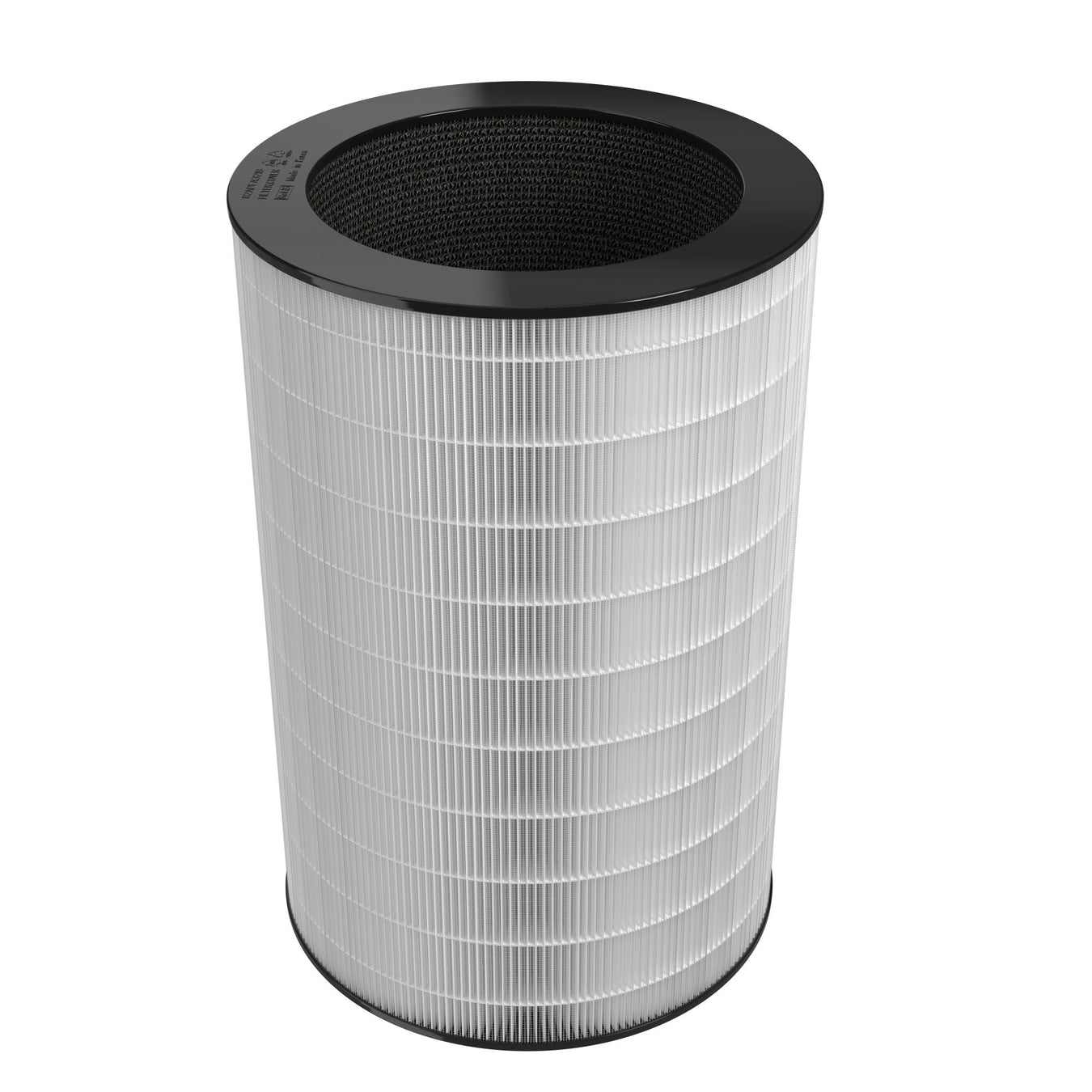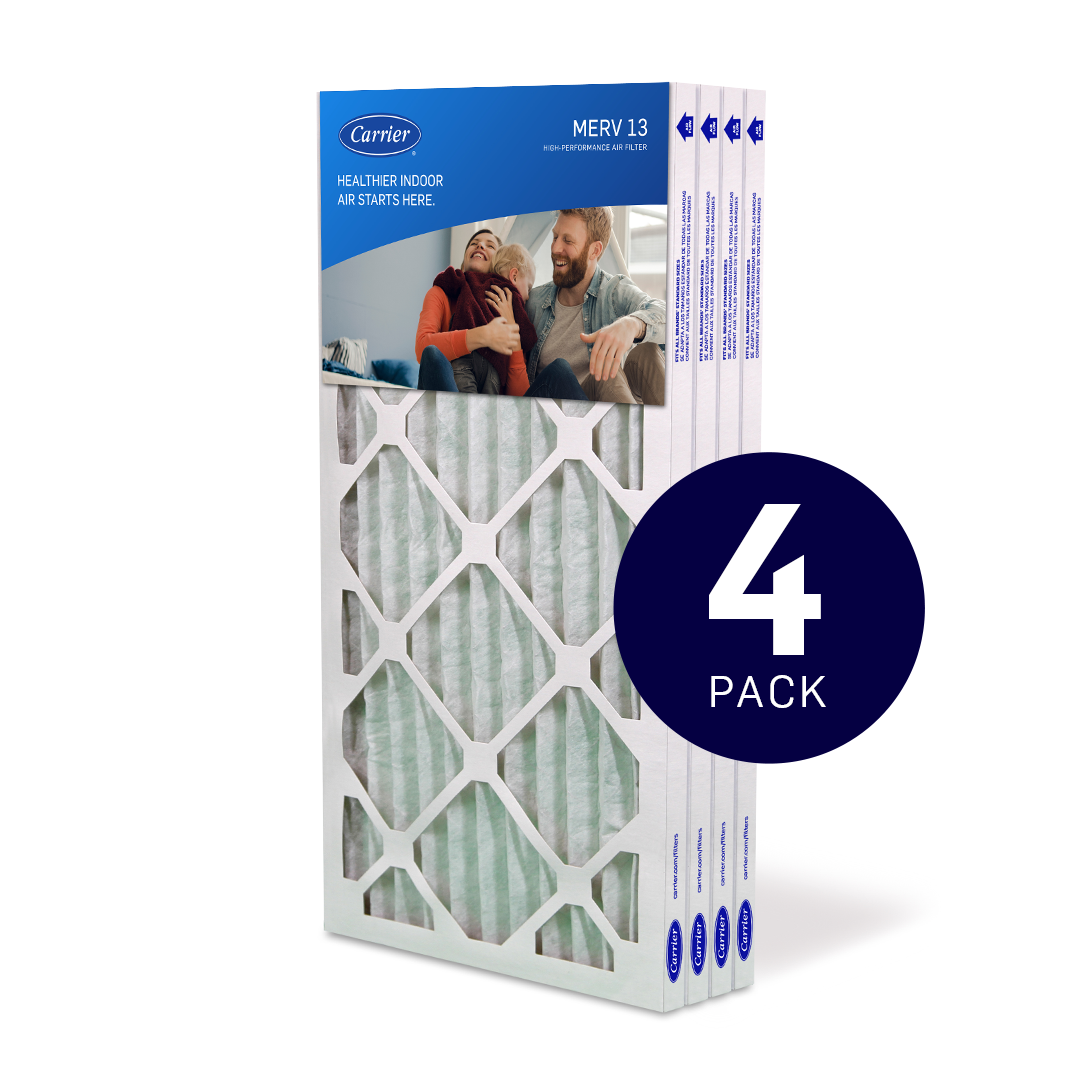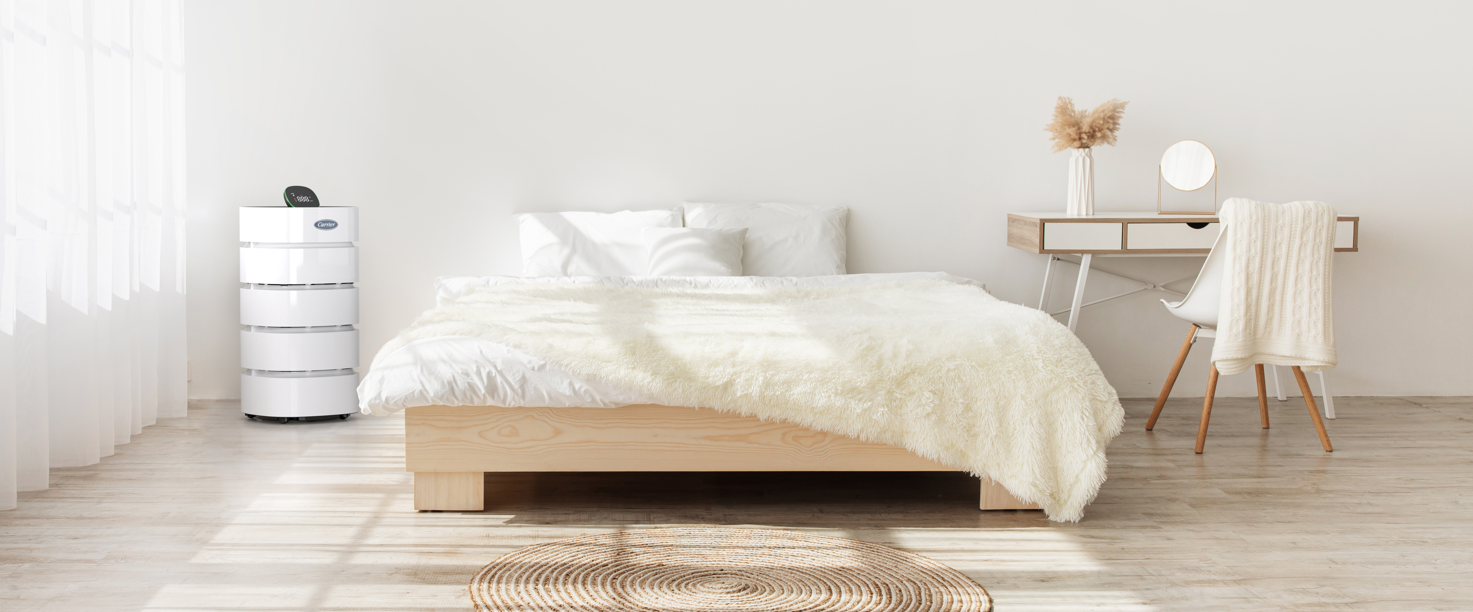
Do Air Purifiers Work?
You’ve seen them in the homes of friends and neighbors, maybe even at your favorite restaurant or hotel: air purifiers that claim to help improve indoor air quality all while purifying the air in your home. But you’re still left with a lingering question: do air purifiers work? As in, do they really live up to their billing?
Let’s start with a simple answer followed by an in-depth explanation: yes, effective air purifiers do what they promise. The key word here is “effective. That’s why, choosing the right one is key to improving air quality for you and your family.
In the end, the unique needs that you and your family members have is paramount when it comes to choosing an air purifier that will help you breathe cleaner, healthier air all year long. Throughout the course of this article, we will provide information to inform your choices. We’ll also walk you through some of the air purification products by Carrier.
Do Air Purifiers Really Work? The Basics
Having established the answer to the question, “do air purifiers really work,” let’s talk first about why some people might want to purchase an air purifier. Many people will purchase an air purifier because they can help filter pollutants like pollen, dust, tobacco smoke, pet dander, and volatile organic compounds, but did you know that high quality air purifiers can also help filter fine inhalable particles? This is important to know because fine inhalable particles that are generally 2.5 microns (PM 2.5) or smaller are known to pose the greatest risk to your health.1 Additionally, studies have shown that using an air purifier in your home can help improve “at least one measure or marker of improved health outcome.”1 A few examples of those health outcomes or markers “include allergy and asthma symptoms and several markers of cardiovascular effects... associated with exposure to [particulate matter].”
Another specific subset of irritants found in the air are known as volatile organic compounds, but you can call them VOCs for short. VOCs are potentially harmful gases that are emitted into the air from common household products like paint, cleansers, disinfectants, and other building materials.2 Which is to say that these are largely unavoidable in the average home. The good news is that the right air purifier with a good carbon filter can help reduce many of these compounds that reside in the air inside your home.

Which brings us to another important point: there are several different types of air purifiers on the market, with some being highly effective and others unable to live up to their promises. The main types of air purifiers include:
- Those with HEPA filters
- Those with activated carbon filters
- Ionizers
- Ultraviolet air purifiers
Here’s a closer look at each type:
HEPA filters: Short for High Efficiency Particulate Air filtration, HEPA air purifier filters work to remove 99.97% of particles 0.3 microns in size.
Carbon filters: Using activated charcoal air filters, these purifiers help to remove odors and VOCs in your home. When combined with a HEPA filter, a carbon filter is a fantastic tool in your home’s air purification arsenal.
Ionizers: This type of air purifier charges particles so that they are attracted to objects within a room. The charged particles will then settle on surfaces within your home. Unfortunately, studies haven’t shown any substantial benefits from using an ionic air purifier, especially considering that they don’t filter particles from your home environment.3
Ultraviolet: Some carbon air purifiers will include ultraviolet technology and can be installed as part of your HVAC system. The high-powered ultraviolet light can help kill mold and mildew growing on your HVAC’s indoor cooling coil.
Get more answers to the question “what does an air purifier do?” here.
How Well Do Home Air Purifiers Work?
On to the next question: how well do air purifiers work? In short, that depends on what type of air purifier you purchase. However, the high-quality air purifiers from Carrier work excellently to clean the air in your home.
Featuring the ability to capture 99% of airborne particles 0.3 microns in size, the Carrier Air Purifier is an excellent choice. It comes in two sizes: regular for rooms up to 430 square feet and XL for those up to 560 square feet. Both models feature an onboard air quality monitor that continually samples incoming air in order to measure pollution levels and displays an air quality color code on an easy-to-read LED screen. Another useful feature is the Smart Auto mode that allows the air cleaner to automatically adjust fan speed based on your indoor air quality level.

If you’re looking for a few more features, consider the Carrier Smart Room Air Purifier, which performs all the same essential tasks to help filter particles as the original Carrier Air Purifier, but also allows you to control from anywhere in the world via the Carrier Home App. 4 It also works seamlessly well with Alexa® and Google Home®. Its built-in HEPA filter captures 99.97% of airborne particles 0.3 microns in size and is ideal for rooms up to 430 square feet (or up to 560 square feet for the XL version). You can’t go wrong with either option. All Carrier air purifiers help reducing airborne particles such as dust, pollen, pet dander, smoke and more.
Finally, let’s discuss the amount of time it takes for air purification to occur in your room. The Association of Home Appliance Manufacturers (AHAM) has developed a standard for measuring the efficacy of an air purifier called the Clean Air Delivery Rate (CADR). CADR informs you of the volume of filtered air produced by an air purifier and provides a separate score for tobacco smoke, pollen, and dust. AHAM recommends the CADR of an air purifier to be at least two-thirds of your room’s area.5 For example, the Smart Air Purifier XL has the following CADR scores: Tobacco Smoke CADR – 365; Dust CADR – 385, Pollen CADR – 427. Get more answers by reading “how do air purifiers work” or "air purifier for smoke"
- https://www.epa.gov/indoor-air-quality-iaq/technical-overview-volatile-organic-compounds
- https://www.epa.gov/sites/default/files/2018-07/documents/residential_air_cleaners_-_a_technical_summary_3rd_edition.pdf
- https://www.epa.gov/indoor-air-quality-iaq/technical-overview-volatile-organic-compounds
- *Wi-Fi® connection required. Free Carrier Home App download required. See User Manual for more details.
- https://ahamverifide.org/ahams-air-filtration-standards/

